Making transitions from one activity to another in the classroom often takes some trial and error. Transitions are an important part of our day in pre-k, even though they seem like minor moments that don’t even make it onto our written schedule.
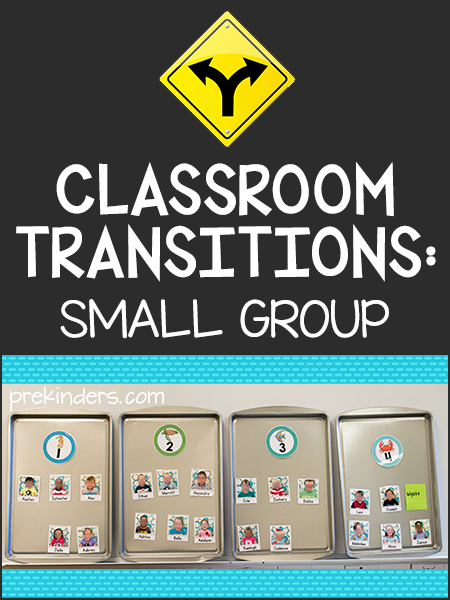
Recently I got emails from teachers asking me how we transition to small group. I thought it might be helpful to post it here, but I know so many of you teachers out there have great ideas for transitioning to small group. So please share your ideas in the comments section below to describe how you transition to small group. Your comments can be a huge help to other preschool teachers!
Just to clarify first: In my classroom, I do our Small Group time separate from Center Time. They are two separate things on our schedule. We have free choice centers, so this is not the way we transition to Center Time. I know in some pre-k classrooms, these times are done differently. Check these links to how I do Center Time, as well as Small Group.
The way I transition the children to small group is nothing fancy because I just want to quickly move us from large group to small group so we can get busy learning.
I have four groups of children and we rotate through the groups over four days. I have magnetic boards with children’s photos that show the kids what table they need to go to that day.
How I Prepared the Classroom for Transitions
At the beginning of the year, I took a “headshot” photo of each child. {Quick tip: I used my iPhone and set it to take square photos. Squares are easier to work with than rectangles, because if you need to crop it a little, you don’t have to worry about getting the proportions just right.}
I printed each child’s photo on card stock paper with their name underneath, laminated them, and attached a magnet to the back.
I bought four of these very inexpensive ($1) cookie sheets at the Dollar Tree. If you want to get fancy, you could spray paint them, but I just left them silver.
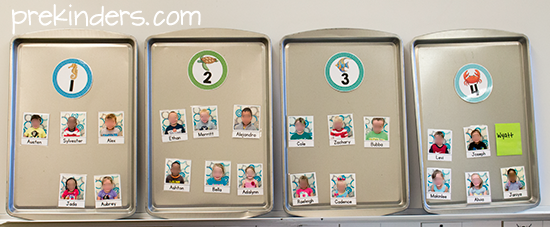
I made table signs for each of my tables, using a number with a picture symbol. The symbol helps children in the beginning of the year when/if they don’t recognize numbers yet. The table signs hang above each table with fishing cord and a ceiling hook. I made a mini version of the table signs to use as magnets on the small group boards (cookie sheets).
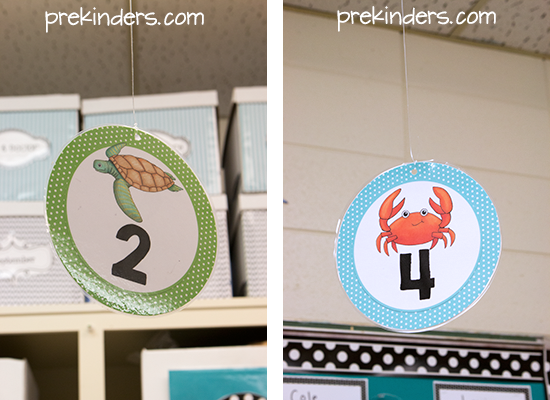
The magnets are perfect so I can easily swap the children’s pictures if I want to change the groups. I change groups every 1-3 weeks, depending on what we’re doing.
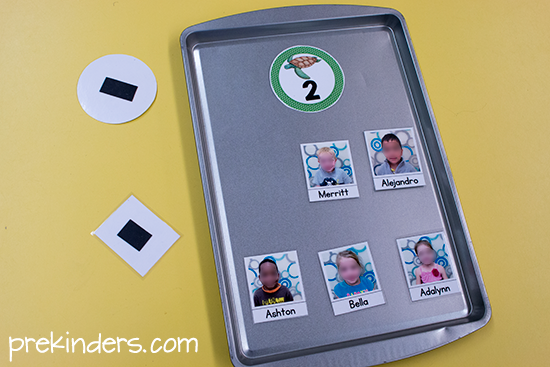
The magnets on the mini table signs allow me to switch the groups to the next activity each day. All I have to do at the beginning of each day is move the table number circles to the next board (cookie sheet).
How the Children Transition to Small Group
As we move from large group to small group, I call out the table numbers one by one. The kids look at the boards to see where they are supposed to go. That’s it! It all works very smoothly. Of course, at the beginning of the year, it was not smooth, so I had to train them to get to this point.
Occasionally, if a child wanders around and asks, “Where do I go?”, I tell them to “Go look at the board.” It puts the responsibility back on them, and they don’t get used to me telling them where to go every day. At the beginning of the year, children need more direction, so I placed each magnet board on each table for awhile.
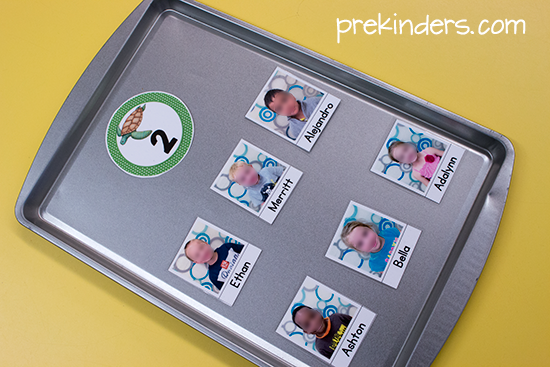
So, how do you transition your students to small groups? Share in the comments below!
